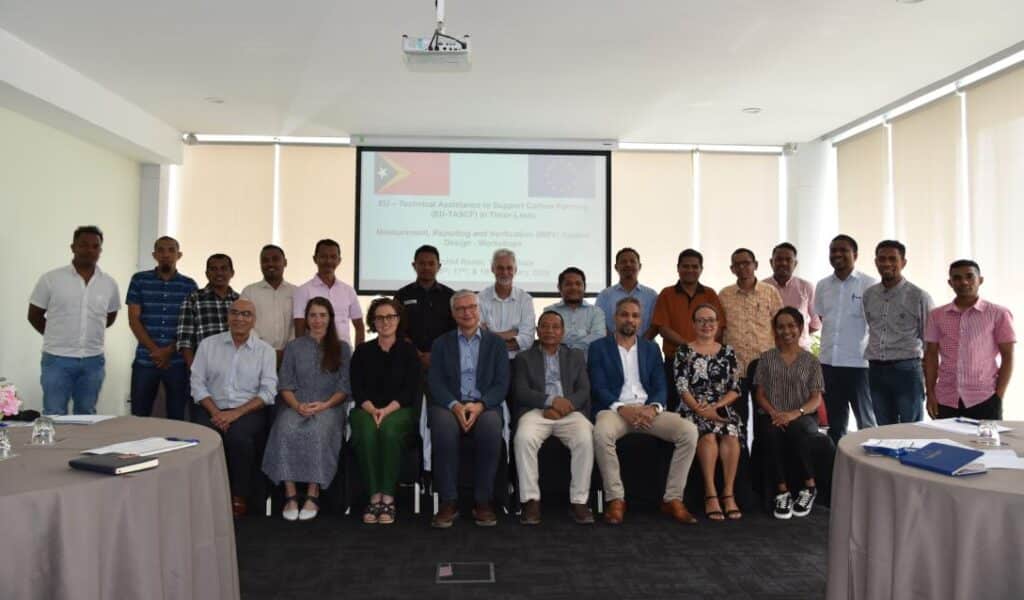Positioned at the crossroads of ecological vulnerability and democratic progress, the Government of Timor-Leste is striving to achieve sustainable development amidst its unique geopolitical landscape. This case study details an ambitious endeavour to leverage carbon farming and design Monitoring, Reporting, and Verification (MRV) for the land sector, aimed at transforming environmental challenges into avenues for sustainable growth and lower emissions.
The challenge
Timor-Leste faces environmental challenges, including reduced forest cover, declining soil fertility, and intensive land use, which place pressure on its limited natural resources. The response? A commitment to forge robust MRV for the land sector, focused on promoting carbon farming initiatives and supporting the Government of Timor-Leste to report internationally on their national land sector greenhouse gas (GHG) emissions, paving the way for a decarbonised future.
Vision for change
The MRV objectives set forth were ambitious yet clear:
-
Create a conducive environment for carbon farming and voluntary carbon projects.
-
Align with international reporting requirements and potential for Timor-Leste access results-based payments for its efforts in emission reduction and carbon sequestration.
-
Design implementable systems that meld with the government’s existing data infrastructures, serving the collective interests of all stakeholders involved.

The journey
The foundation was laid via a series of structured consultations and workshops. These sessions were crucial in understanding MRV requirements, establishing institutional frameworks, and identifying the technical specifications needed for its fruition. Central to this endeavour were:
-
Engaging stakeholders to refine the MRV objectives and scope.
-
Mapping out institutional roles and the technical blueprint essential for the MRV’s operational success.
-
Crafting a detailed technical report that outlines the systems required to be implemented to enable successful MRV, encapsulating cost analyses and capacity-building strategies.
Realising the vision
The fruition of this project presented a detailed blueprint for implementation of land sector MRV in Timor-Leste. This comprehensive report summarised the pathway for institutional setups, technical decision-making, data sourcing, and procedural requirements. Additionally, it offered a considered assessment of the potential financial outlays, timelines, and the additional capacities essential for MRV to be successful.
Client’s reflection
Pedro Godinho Dos Santos Marcal Da Costa, former President of the National Designated Authority for Combating Climate Change, lauded the initiative, appreciating the bespoke approach that catered to Timor-Leste’s unique environmental and developmental prerequisites. Reflecting on the engagement, he remarked, “It was a pleasure to meet you and be involved in the workshop. We are so glad to have an expert like yourself to support us on the MRV design for Timor-Leste.” This endorsement highlights the effectiveness of the personalised approach and the significance of expert support in climate mitigation.
The path forward
This collaborative endeavour highlights the importance of technical assistance and capacity enhancement in empowering nations like Timor-Leste to navigate their environmental challenges. With expert consultancy and concerted efforts, Timor-Leste has the blueprint for land sector MRV which aligns with its long term ambitions, showcasing a committed stance towards environmental stewardship and adherence to international reporting requirements.